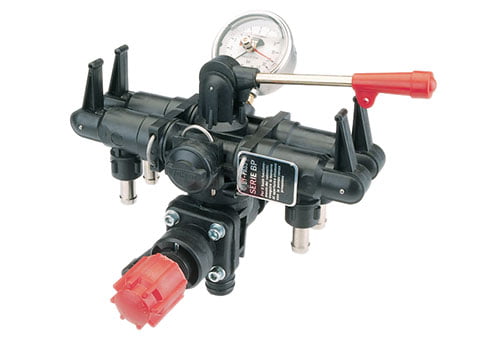How Control Valves Impact Energy Efficiency in Industrial Settings
How Control Valves Impact Energy Efficiency in Industrial Settings
Blog Article

Maximize Power Financial Savings and Comfort With Advanced Structure Automation Controls
In the world of modern design and center management, the integration of innovative building automation manages stands as a crucial development. By using the power of automation, structures can adapt, respond, and progress in means that were once unthinkable.
Power Efficiency Advantages
Energy performance advantages can significantly lower power usage and operational costs in structures. Energy-efficient systems, such as sophisticated building automation controls, can optimize the usage of resources like cooling, home heating, and illumination, leading to reduced power expenses over time.
In addition, improved power effectiveness can prolong the life expectancy of building tools and systems. By operating extra effectively, a/c systems, light, and various other building parts experience less wear and tear, causing minimized maintenance and substitute costs. In addition, energy-efficient structures commonly command greater residential property values and rental rates, supplying lasting financial benefits to owners.
Additionally, power efficiency can boost passenger comfort and productivity. Correctly managed indoor environments with ideal lights and thermal problems create a more pleasurable and helpful office, bring about improved staff member complete satisfaction and efficiency. On the whole, the energy efficiency advantages associated with advanced structure automation controls are diverse, incorporating price financial savings, ecological stewardship, and occupant well-being.
Enhanced Convenience Control
Enhancing comfort control in structure environments calls for an innovative combination of sophisticated automation systems for optimal owner wellness. By utilizing innovative building automation controls, centers can tailor the indoor setting to satisfy the details requirements and choices of residents. control valves.
By integrating these innovative controls, structures can not just boost convenience yet additionally boost power efficiency by enhancing system operations based on real tenancy and use patterns. Inevitably, prioritizing occupant comfort through sophisticated automation systems leads to a more satisfying and much healthier indoor atmosphere.
Functional Performance Improvements

Moreover, the execution of real-time tracking and analytics devices enables structure operators to recognize energy inefficiencies and functional anomalies immediately. By continuously keeping an eye on power usage patterns and system efficiency metrics, modifications can be made in real-time to optimize power consumption and make certain peak operational efficiency. control valves. In addition, integrating demand action methods into structure automation controls can additionally boost operational efficiency by dynamically adjusting energy usage based on grid conditions and pricing signals
Indoor Climate Optimization
Reliable interior environment optimization is a fundamental element of building automation controls, ensuring owners' comfort and wellness while making the most of energy savings. pop over here By making use of innovative sensing units and controls, constructing automation systems can continuously adjust and keep track of temperature level, moisture levels, air high quality, and air flow to develop an ideal interior environment. Maintaining comfortable and constant conditions not just enhances owner satisfaction however likewise improves efficiency and overall wellness.
Indoor climate optimization likewise plays a vital function in more info here power effectiveness. By fine-tuning air flow, home heating, and air conditioning systems based upon real-time information and occupancy patterns, developing automation controls can substantially minimize energy consumption - control valves. As an example, executing methods such as demand-controlled air flow and thermal zoning can assist minimize energy waste while ensuring that each location of the building obtains the needed conditioning.

Sustainable Setting Development
Structure automation manages not just maximize indoor environment conditions for power effectiveness and occupant comfort yet likewise lay the structure for creating a lasting environment with strategic administration of resources and systems. By incorporating advanced building automation technologies, such as sensors, actuators, and smart software, facilities can keep track of and change power usage in real-time to decrease waste and decrease their carbon impact. These systems make it possible for predictive upkeep, identifying prospective problems prior to they escalate and enhancing equipment efficiency to enhance longevity and effectiveness.
Moreover, sustainable atmosphere production expands beyond energy management to incorporate water preservation, waste decrease, and interior air quality improvement. Building automation controls can regulate water usage, identify leaks, and ensure proper waste disposal methods, adding to general sustainability initiatives. In addition, by monitoring and controlling air flow and filtering systems, these technologies enhance occupant health and productivity while decreasing power intake related to HVAC operations.
Verdict
To conclude, progressed structure automation manages offer significant advantages in regards to energy savings, convenience control, functional effectiveness, indoor environment optimization, and producing a sustainable environment. his response By implementing these controls, structures can attain ideal performance while minimizing energy consumption and boosting passenger comfort. It is obvious that the use of innovative automation technology is important in boosting structure performance and creating an extra lasting future.
Power efficiency benefits can considerably reduce energy usage and operational expenses in buildings. On the whole, the energy effectiveness benefits connected with advanced building automation controls are complex, including price savings, ecological stewardship, and occupant wellness.
Furthermore, including need response techniques into building automation controls can even more enhance operational efficiency by dynamically changing energy usage based on grid conditions and pricing signals.
Building automation manages not only optimize indoor climate conditions for power performance and owner convenience but also lay the foundation for creating a sustainable setting via strategic management of systems and sources.In verdict, progressed building automation controls offer significant benefits in terms of power savings, convenience control, functional effectiveness, indoor environment optimization, and developing a lasting environment.
Report this page